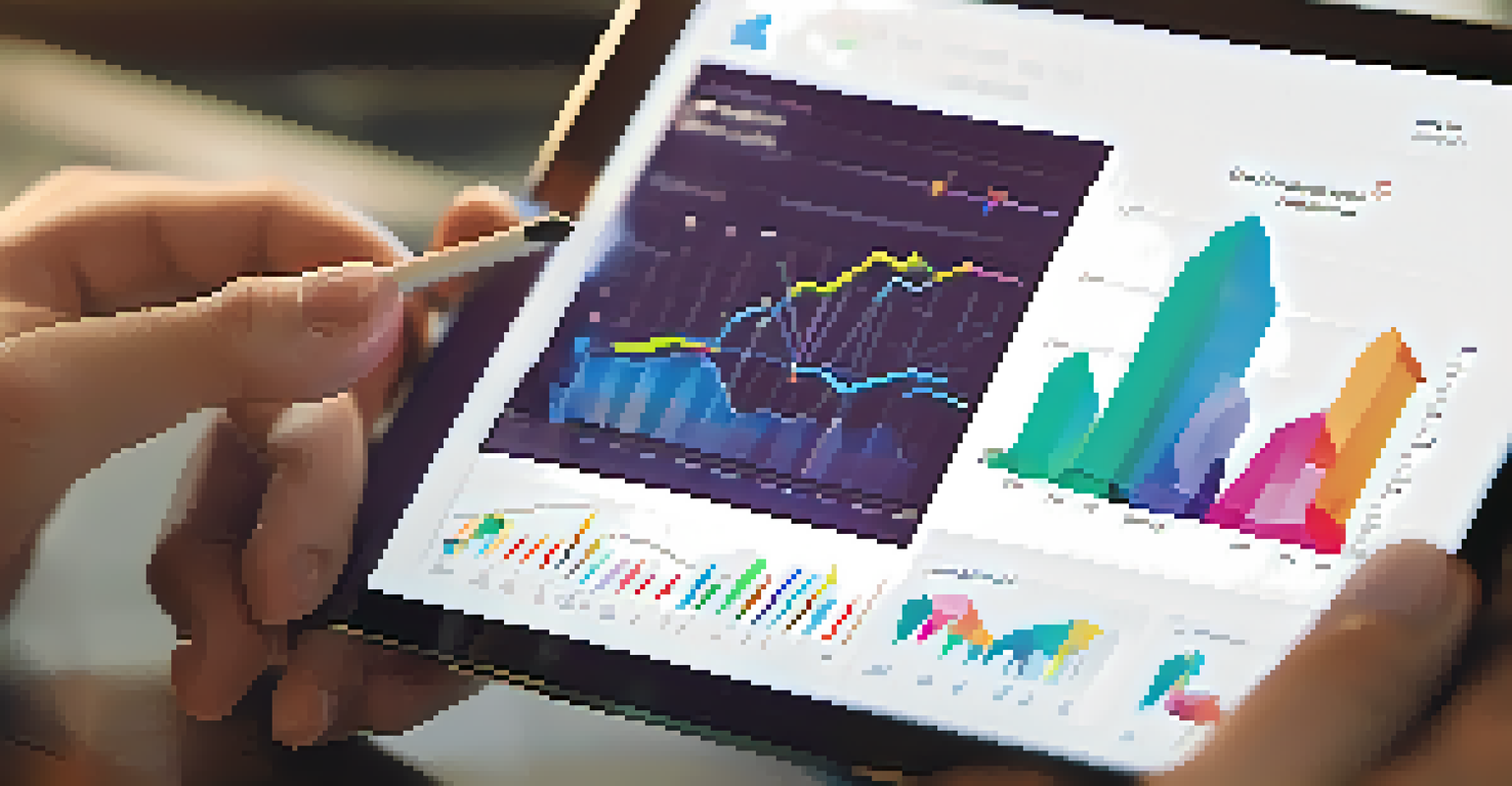AI-Powered Analytics: Transforming Business Insights and Growth

Understanding AI-Powered Analytics and Its Importance
AI-powered analytics combines artificial intelligence with data analysis to extract insights from vast amounts of raw data. This technology goes beyond traditional methods by identifying patterns and trends that humans might overlook. As businesses generate more data, the need for advanced analytics becomes crucial for staying competitive.
Without data, you're just another person with an opinion.
Businesses can leverage AI analytics to make informed decisions, optimize operations, and enhance customer experiences. By automating data processing and analysis, companies can save time and resources while focusing on strategic initiatives. It’s like having a supercharged assistant that sifts through mountains of data to find the golden nuggets of insight.
As we navigate an increasingly complex market landscape, AI-powered analytics can provide the clarity needed to drive growth. Companies that adopt these technologies early on position themselves for success, adapting to changes in consumer behavior and market dynamics more effectively.
Key Features of AI-Powered Analytics Tools
AI-powered analytics tools offer several key features that set them apart from traditional analytics solutions. These include predictive analytics, machine learning algorithms, and natural language processing. By using these features, businesses can not only analyze historical data but also forecast future trends and outcomes.

For instance, predictive analytics can help retailers anticipate customer purchasing patterns, allowing them to stock the right products at the right time. Meanwhile, natural language processing enables businesses to analyze customer feedback from various sources, turning sentiments into actionable insights. Think of it as having a crystal ball that shows not just what has happened, but what is likely to happen next.
AI Analytics Enhances Business Insights
AI-powered analytics allows businesses to uncover hidden patterns and make data-driven decisions, improving overall competitiveness.
Additionally, AI tools often come equipped with user-friendly dashboards and visualizations that make complex data digestible. This accessibility ensures that teams across the organization—from marketing to finance—can engage with data, facilitating a culture of data-driven decision-making.
Real-World Applications of AI-Powered Analytics
AI-powered analytics has found applications across a wide range of industries, demonstrating its versatility and effectiveness. In healthcare, for example, predictive analytics can help in patient diagnosis and treatment plans by analyzing data from previous cases. This application not only improves patient outcomes but also streamlines administrative processes.
The goal is to turn data into information, and information into insight.
In finance, AI analytics can detect fraudulent transactions in real-time by analyzing patterns of behavior. By flagging anomalies, financial institutions can act swiftly to prevent losses, protecting both their assets and their customers. It’s akin to having a vigilant security guard who instantly alerts you to suspicious activity.
Retailers are also reaping the benefits by optimizing inventory management and personalizing customer experiences. By analyzing purchase histories and browsing behaviors, businesses can tailor marketing campaigns that resonate with individual customers, driving engagement and loyalty.
Challenges in Implementing AI-Powered Analytics
While the benefits of AI-powered analytics are evident, the road to implementation is not without its challenges. One significant hurdle is the quality of data; if the data fed into the system is inaccurate or incomplete, the insights derived will be flawed. Businesses must invest time and resources into cleaning and organizing their data before harnessing AI analytics.
Another challenge lies in the integration of AI tools with existing systems. Organizations often operate on a patchwork of legacy systems, making it difficult to incorporate new technologies seamlessly. This situation can be compared to trying to fit a square peg into a round hole—without the right adjustments, it simply won’t work.
Key Features Drive Predictive Insights
Features like predictive analytics and natural language processing empower organizations to forecast trends and enhance customer experiences.
Finally, there’s the need for skilled personnel who can interpret the insights generated by AI analytics. Businesses may need to upskill their workforce or hire new talent to effectively leverage these technologies, which can be a daunting task for some organizations.
The Role of Data Privacy in AI Analytics
As businesses harness AI analytics, data privacy becomes a paramount concern. With increasing regulations like GDPR and CCPA, companies must ensure that they are handling personal data responsibly. Failing to comply with these regulations can result in hefty fines and damage to reputation, making it essential to prioritize data privacy.
Organizations should implement robust data governance frameworks to safeguard sensitive information. This includes practices like data encryption, access controls, and regular audits to ensure compliance. Think of these measures as a security system that protects not just your home but also your most valuable assets.
Furthermore, businesses should be transparent with customers about how their data is being used. Building trust through clear communication helps foster stronger relationships with clients, paving the way for loyalty and long-term success.
Future Trends in AI-Powered Analytics
The landscape of AI-powered analytics is continuously evolving, with exciting trends on the horizon. One such trend is the rise of augmented analytics, which combines AI with human intuition to enhance decision-making. This approach allows analysts to focus on interpreting insights rather than spending hours on data preparation.
Another emerging trend is the integration of AI analytics with the Internet of Things (IoT). As more devices become interconnected, the volume of data generated will skyrocket, providing a wealth of insights for businesses. Imagine being able to analyze real-time data from smart appliances to optimize energy consumption in a home or office setting.
Data Privacy is Crucial for AI Use
As companies leverage AI analytics, ensuring data privacy and compliance with regulations is essential to maintain customer trust and avoid penalties.
Finally, as AI technology advances, we can expect to see improvements in natural language processing capabilities. This will enable more intuitive interactions with analytics tools, allowing users to ask questions in plain language and receive insightful answers. It’s like having a conversation with your data, making analytics more accessible to everyone.
Conclusion: Embracing AI-Powered Analytics for Growth
In conclusion, AI-powered analytics represents a game-changing opportunity for businesses aiming to enhance their insights and drive growth. By leveraging advanced technologies, organizations can uncover patterns, predict outcomes, and make data-driven decisions that propel them forward. The journey may come with challenges, but the rewards are well worth the effort.
As we move towards an increasingly data-driven future, embracing AI analytics will be essential for businesses that want to stay competitive. Companies that invest in these technologies today will be better equipped to navigate the complexities of tomorrow's market landscape. It’s not just about keeping up; it’s about leading the way.

Ultimately, the key to success lies in maintaining a balance between technology and the human touch. While AI can provide valuable insights, it is the creativity and intuition of people that will drive innovation and growth. By combining the best of both worlds, businesses can truly unlock their potential.